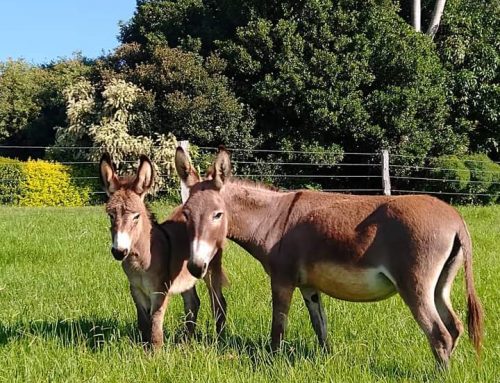Alstonville or Duck Creek Mountain?
The village of Alstonville was originally known as “Duck Creek Mountain” after Duck Creek, which flows along the southern edge of town and eventually merges with Emigrant Creek and the
Richmond River. The name was given by the Cedar Cutters because of the abundance of wild ducks on the upper tidal reaches of the creek.
[3] In 1873, due to confusion with a different Duck Creek, the first postmaster John Perry changed the name to “Alstonville”. Alstonville, was derived from Alston the maiden name of his wife Annie Alston.
Duck Creek
Alstonville Country Cottages is set on 42 acres at Perry’s Hill, just 1 km from the village of Alstonville. 25 acres of the property is still under rainforest, a remnant of the Big Scrub
https://www.bigscrubrainforest.org/ which, before European settlement, extended up to the hinterland from the coast and covered an area of 75,000 ha.
In order for you to access this remnant we have made a loop walking track through the rainforest down to the banks of Duck Creek a hidden and tranquil spot. Prior to European settlement the area was occupied by the Widjabul Aboriginal people, of the Bundjalung nation who lived successfully off the fauna and flora of the valley.
As you walk through the rainforest today down to Duck Creek it is as if you have stepped back in time. Look around you and you can imagine and see glimpses of history.
Red Cedar
Europeans were first attracted to the Big Scrub rainforest in the 1840s by the plentiful supply of Red Cedar or ‘Red Gold’ as it used to be called. The Cedar cutters felled the trees and dragged them through the bush to the Creek and floated them then down the creek to the Richmond River. Cleared slipways can still be seen in the steep riparian area. There are still some remaining majestic Red Cedars on the Duck Creek forest walk as well as hundreds of endemic native species such as the Blue Quandong, Black Bean, Rosewood, Red Bean, Kamala, Steelwood to name just a few. Don’t miss the ancient massive Fig near the start of the walk, which with its long branches reaching almost to the ground must hide many a secret.
Victoria Park Nature Reserve
This reserve, 8km from the cottages is also part of the Big Scrub subtropical rainforest. There is a pleasant boardwalk and if you are lucky you might see red-legged pademelons, potoroos, water rats and possums. For more information. https://www.nationalparks.nsw.gov.au/visit-a-park/parks/victoria-park-nature-reserve
First Settlers
It was not until 1865 that the first settlers selected land in the area, then known as the parish of Tuckombil. Some notable settlers in the first five years include those of the Freeborn, Robertson, Graham, Newborn, Crawford, Mellis, and Newton families.
[2] These family names are remembered by street names around Alstonville. By 1883 Alstonville boasted two pubs, six stores, two black-smiths, nine sugar mills, and four saw mills.
[2]
“After travelling about for some time in search of a spot for establishing a small sugar plantation, I decided upon settling down upon the Duck Creek, Table-land.This place is six miles due west from Ballina or Rich-mond River Heads, and has the sea breeze in summer to cool the temperature. We are at present in the middle of winter, the climate is salubrious, and alto-gether it is a delightful place.To reach here from Ballina we take boat for four miles on the Richmond into Emigrant and Duck Creeks, up which we have to pull for another six miles.Leaving the boat at Uralla, we ascend the ranges by a gradual rise of from 300 to 400 feet above the sea, and this table-land is reached. It is about twelve miles broad and about fifty miles long. The soil is of a rich red or chocolate colour, and any depth, from six to twenty feet and more. It is well drained by numerous mountain streams, the scenery being very picturesque.I have seen five waterfalls, ranging from 25 to 80 feet in height. The large one makes a noise like the sea at Bondi in an easterly gale” Settler in 1870.
Sugar Cane
Sugar cane was an important industry to the early settlers, with many small mills operating across the district.” the land up here cannot be surpassed for richness. We are out of the reach of any flood, the soil is well watered, and drained by nature, and the climate is one of the best for the growth of sugar, arrowroot, maize, ginger, &c.” 1870 article
Sugar cane is still a major industry in this area and the burning off at night is a spectacular site. The Broadwater Sugar Mill is situated on the Richmond River south of Ballina. It commenced operations in 1881 and by the 1890’s was crushing 900 tons of cane per day and was the most important sugar factory in Australia. http://sunshinesugar.com.au/16-information/nswsm-about-us/8-broadwater-mill
Other crops were grown on the rich soil leading down to the creek and signs of allotments divided up by rock walls are still evident. Bananas and smaller crops were all planted here without the aid of any machinery.
Dairies
From the 1890s onward, dairies became common across the area, later becoming the dominant industry for the first half of the 20th century. They also cleared the rainforests to open up pastureland. Due to lack of refrigeration, cream, not milk, was the product of interest, which was transported to local factories to be made into butter. The first butter factories were located at Wollongbah (1889), Rous (1889) and Teven Road (1890).
[3] In 1900 the NSW Creamery Butter Company built the Alstonville factory near Maguires Creek, which was later acquired by
NORCO. After closing this building it became a peanut factory. You can still see the original brick building, now being used as a furniture store, as you leave Alstonville towards Wollongbar.
Avocados and Macadamias
Dairies have now mainly been surpassed in the Alstonville area by horticulture with peaches, avocados and macadamia nuts being grown in abundance on the rich volcanic soil. Avocado processing can be seen by the public at http://www.summerlandhousefarm.com.au and Macadamia processing at https://mpcmacs.com.au/.`
Opposite the cottages was the Dept of Agriculture Tropical Research Station where many fruit trials were carried out in 1990s to help and advise the local farmers..
Crawford House Museum
More history of the area and of local families can be found at the Crawford House Museum in the centre of Alstonville. Originally the home of William Ambrose Crawford, it is a fine example of an elegant Federation-era northern NSW timber house, built in 1911. http://aphsmuseum.org.au/.
Come and visit Alstonville and Duck Creek and discover the history for yourself






